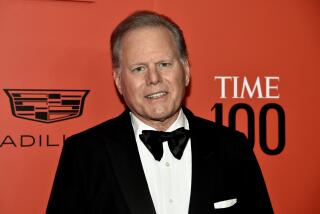More Companies Increase Dividends
- Share via
Hefty corporate earnings and a federal tax cut helped persuade more companies to boost cash dividend payments to shareholders last year.
A total of 1,745 U.S. companies raised their dividends in 2004, up 7% from the 1,630 that increased payments in 2003, according to a report Monday from research firm Standard & Poor’s in New York.
The pace of increases was half that of 2003, however, disappointing analysts who had expected a larger number of companies to reward investors.
Cash dividends, typically paid quarterly, are a way for companies to return some of their profit directly to shareholders. Flush with cash, some firms boosted their payouts sharply last year.
Los Angeles-based home builder KB Home Corp. in December lifted its annual dividend rate 50%, from $1 a share to $1.50. Athletic apparel maker Nike Inc. raised its annual dividend rate 25% in November, from 80 cents a share to $1.
The appeal of dividends to investors was greatly enhanced in May 2003, when Congress approved President Bush’s plan to slash the top federal tax rate on dividend income from 38.6% to 15%, the lowest since World War I. The tax cut helped to stoke a 14% jump in dividend increases in 2003 from 2002, according to S&P.;
Last year, some companies may have put off raising dividends because of uncertainty over the Nov. 2 presidential election, said Allan Rudnick, chief investment officer at Kayne Anderson Rudnick Asset Management in Los Angeles and a proponent of bigger dividends.
Sen. John F. Kerry, the Democratic challenger, had pledged to roll back some of Bush’s tax cuts if elected. That might have lessened pressure on companies to lift their cash payments to investors.
Bush was reelected -- and the number of companies raising dividends in November and December totaled 309, up 17% from the year-earlier period, S&P; data show.
But the election wasn’t all that held companies back from paying larger dividends last year, said Charles Carlson, a money manager at Horizon Investment Services in Hammond, Ind.
He believes that many corporate managers are skittish about parting with accumulated profit because of deep-seated concerns about the economy and whether the expansion will continue. Terrorism fears also are a factor, Carlson said.
“I think there’s a huge conservatism in corporate America now,” he said.
As cash builds up on corporate balance sheets, however, managers won’t be able to use those excuses much longer, Carlson said. “I see 2005 as the acid test for dividend increases,” he said.
Rudnick said he expected that rising dividends would be a long-term trend, in part because of shareholder pressure on management. Dividend income “is worth a lot more to investors now,” he said.
With the 2003 tax cut, dividends and long-term capital gains are taxed at the same maximum rate of 15%. Until the tax cut, capital gains had long enjoyed lower tax rates than dividends -- so there was more incentive for people to invest for stock-price appreciation than for dividends.
One of the biggest shifts in corporate attitudes toward dividends occurred at Microsoft Corp. last year. The software titan in December paid shareholders a one-time dividend of $3 a share, totaling $32.6 billion. It was a record for any company.
But the total number of companies making such so-called extra dividend payments in December was 172, down from 197 a year earlier, S&P; said. Its database covers 7,000 firms.
Some analysts had expected more companies to step up with extra dividend payments because they allow managements to reward shareholders without locking in a higher regular dividend rate. Once a quarterly dividend rate is set, companies are loath to anger investors by reducing it; but shareholders know that extra dividends can vary in size from year to year.
Despite increased dividend payments in recent years, the annualized dividend yield on the average blue-chip stock is about 1.7%, which is below the yield on short-term U.S. Treasury bills.
Still, any added return from dividend income could become more important to shareholders if stock price appreciation slows in the next few years, analysts note.
*
(BEGIN TEXT OF INFOBOX)
Where dividends went up: a sampling
Here are some of the companies that raised dividend payments in the fourth quarter. Dividend yield is the annual dividend divided by the stock price.
Mon. Annual dividend: Pctg. stock Div. Company Old New rise price yield
Toro $0.24 $0.48 +100% $81.53 0.6% World Wrestling Ent. 0.24 0.48 +100 12.00 4.0 KB Home 1.00 1.50 +50 103.90 1.4 Edison Intl. 0.80 1.00 +25 31.76 3.1 Nike 0.80 1.00 +25 90.69 1.1 Boeing 0.80 1.00 +25 50.97 2.0 Becton Dickinson0.60 0.72 +20 56.01 1.3 Wachovia 1.60 1.84 +15 52.19 3.5 Mattel 0.40 0.45 +13 19.17 2.3 Pfizer 0.68 0.76 +12 26.45 2.9
Source: Times research, Standard & PoorÕs
More to Read
Inside the business of entertainment
The Wide Shot brings you news, analysis and insights on everything from streaming wars to production — and what it all means for the future.
You may occasionally receive promotional content from the Los Angeles Times.










